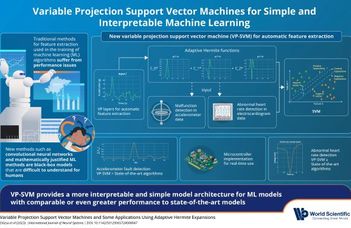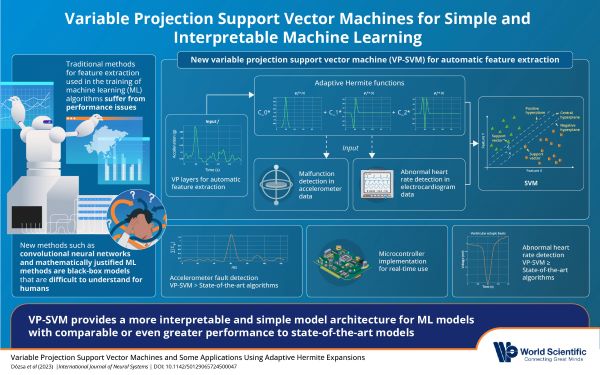Great Success of Cyber Security Research Group of Thematic Excellence Projekt TKP2021-NVA29

Researchers of TKP project and Department of Numerical Analysis of ELTE Faculty of Informatics, Péter Kovács and Tamás Dózsa together with co- authors Federico Deuschle and Bram Cornelis (Siemens Industry Software, Belgium) have achieved a great success with their paper published in International Journal of Neural Systems Vol. 34, No. 01 (2024), DOI 10.1142/S0129065724500047.
World Scientific Publishing Co. has acknowledged the high quality of the publication by creating an infographic and a short video about main results of the researchers. We are proud to share them below.
Title: Variable Projection Support Vector Machines and Some Applications Using Adaptive Hermite Expansions
ABSTRACT
In this paper, we develop the so-called variable projection support vector machine (VP-SVM) algorithm that is a generalization of the classical SVM. In fact, the VP block serves as an automatic feature extractor to the SVM, which are trained simultaneously. We consider the primal form of the arising optimization task and investigate the use of nonlinear kernels. We show that by choosing the so-called adaptive Hermite function system as the basis of the orthogonal projections in our classification scheme, several real-world signal processing problems can be successfully solved. In particular, we test the effectiveness of our method in two case studies corresponding to anomaly detection. First, we consider the detection of abnormal peaks in accelerometer data caused by sensor malfunction. Then, we show that the proposed classification algorithm can be used to detect abnormalities in ECG data. Our experiments show that the proposed method produces comparable results to the state-of-the-art while retaining desired properties of SVM classification such as light weight architecture and interpretability. We implement the proposed method on a microcontroller and demonstrate its ability to be used for real-time applications. To further minimize computational cost, discrete orthogonal adaptive Hermite functions are introduced for the first time.
Click here to see the video summary of the article.
Congratulations to the authors!


